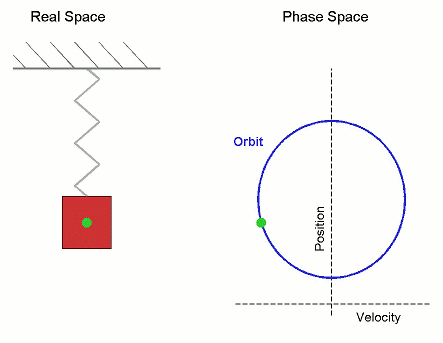Question #9f6e5
1 Answer
Explanation:

Above figure depicts Simple harmonic Motion. The left figure shows it in real space and the right one in phase space.
The value of Potential energy in the system depends on the initial conditions.
We need to remember the following:
-
During the cycle, part or full potential energy of the particle gets converted into its kinetic energy and vice versa.
-
At mean position Potential energy is minimum and kinetic energy maximum.
-
At extreme positions Potential energy is maximum and kinetic energy is minimum and equal to zero as extreme position the particle is temporarily stationary.
-
During the motion at any point of time the sum of instantaneous Potential Energy and instantaneous Kinetic energy is a constant of the system. In other words the total mechanical energy has a constant value.
Keeping above in view,
When maximum PE
Here minimum Kinetic Energy
Maximum Kinetic Energy
At this point of time Potential Energy will be minimum
One can set initial conditions so that minimum PE
